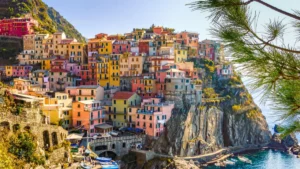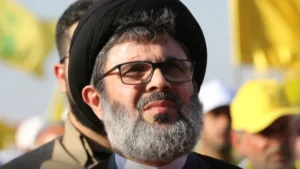
A Transnistria, a pro-Russian separatist region located east of Moldova, sounded the alarms on Wednesday after local authorities approved an official declaration calling for Russia’s “protection” from Chisinau. But, after all, what led to this request and what is the position of Western countries (and Ukraine)?
Concern regarding Transnistria intensified with the start of the Russian invasion of Ukraine, in February 2022, and there were even hints about a possible expansion of the conflict to the region.
In 2023, the authorities of the self-proclaimed republic, located between Moldova and Ukraine, accused Kyiv of intending to attack it and stated that they prevented an attack against its leaders. At the time, the Russian Ministry of Defense also assured that the Ukraine prepared an “armed provocation” against Transnistria.
In January of this year, Transnistrian authorities warned that combat groups were being trained in Moldovan territory to launch an attack against the self-proclaimed republic. In a statement, the region’s Ministry of Security said the groups were made up of more than 60 people, most of them from Ukrainian territory and with experience in combat operations.
A month later, in the face of growing tensions, Transnistrian deputies met in an extraordinary congress – the first since 2026 – and signed a declarationin which requested that Moscow “adopt measures to protect Transnistria in a context of increasing pressure from Moldova”.
Transnistrian deputies meet at extraordinary congress© STRINGER/AFP via Getty Images
Currently, Russia maintains 1,500 soldiers on the territory, according to official figures, involved in a peacekeeping mission. However, in response to the request, the Russian Foreign Ministry argued that “protecting the interests of Transnistrian residents” is “one of the priorities“.
“All requests are always carefully considered by the relevant Russian bodies”he declared.
Moldova has already criticized the request for “protective measures”, with Moldovan Deputy Prime Minister Oleg Serebrian arguing that the government “rejects propaganda coming from Tiraspol”capital of the self-proclaimed republic.
On the Ukrainian side, Foreign Minister Dmytro Kuleba called on “a peaceful resolution of economic, social and humanitarian issues [entre Moldova e Transnístria]without any destructive external interference”.
“We are doing and will continue to do everything possible to (…) prevent any attempt by Russia to destabilize Moldova or other countries in our region”, added the minister, who said he was “closely following the latest developments” and called for “the rapid withdrawal of Russian troops” from Transnistria.
And what do Western countries say?
US State Department spokesman Matthew Miller assured that “the United States strongly supports the sovereignty and territorial integrity of Moldova within its internationally recognized borders”.
European Union (EU) diplomacy said it was monitor the situation “very closely” and stressed that “stability in this region” is “in the interests of all populations”.
“The EU is following very closely the development of the situation in the Republic of Moldova and also in the breakaway territory of Transnistria. We believe that stability in this region is, first and foremost, in the interests of all populations on both sides of the river and In this context, we encourage both parties to engage in constructive dialogue”said European Commission Spokesperson for Foreign Affairs, Peter Stano.
Like Ukraine, France also considered that Russia was “very likely” behind the “destabilization attempts” in Moldova.
“Moldova faces increasingly aggressive destabilization attempts, most likely driven by Russia”said the spokesman for the Ministry of Foreign Affairs, commenting that “the call for so-called protection by Moscow from separatists who do not have autonomy is a known scenario.”
It should be noted that Transnistria, a narrow strip of land, declared secession after a brief conflict in 1992 against the Moldovan Army. However, the territory, which runs along the Dniestr River and officially has 465,000 inhabitants, the majority of whom are Russian speakers, is not recognized as a state by international bodies, including Moscow.
Read Also: Moscow “very likely” behind tension in Moldova

Download our free App.
Eighth consecutive year Consumer Choice for Online Press and elected product of the year 2024.
* Study by e Netsonda, Nov. and ten. 2023 product of the year – pt.com
Source: https://www.noticiasaominuto.com/mundo/2511837/o-que-se-passa-na-transnistria-e-o-que-levou-ao-pedido-de-ajuda-a-russia





